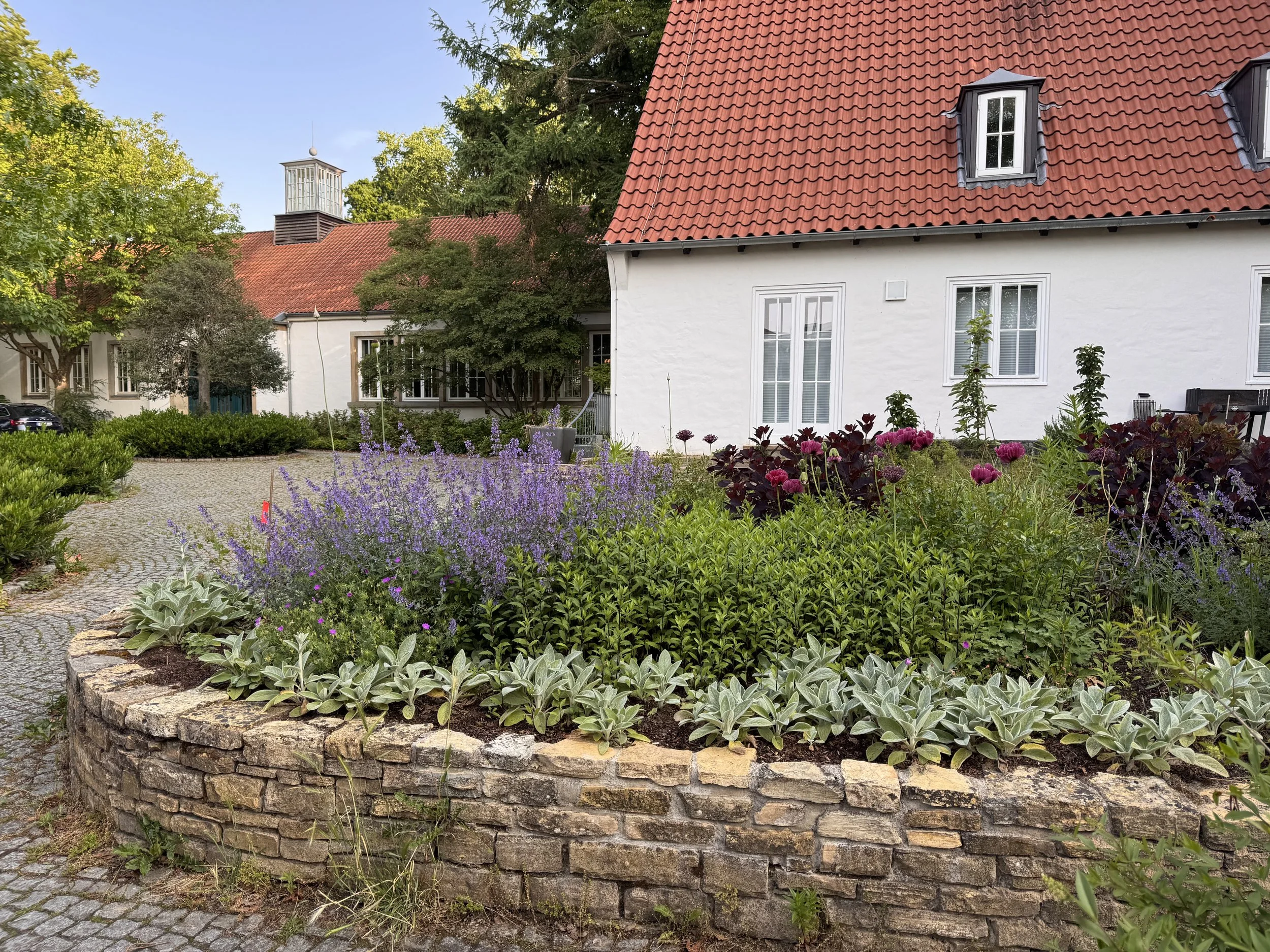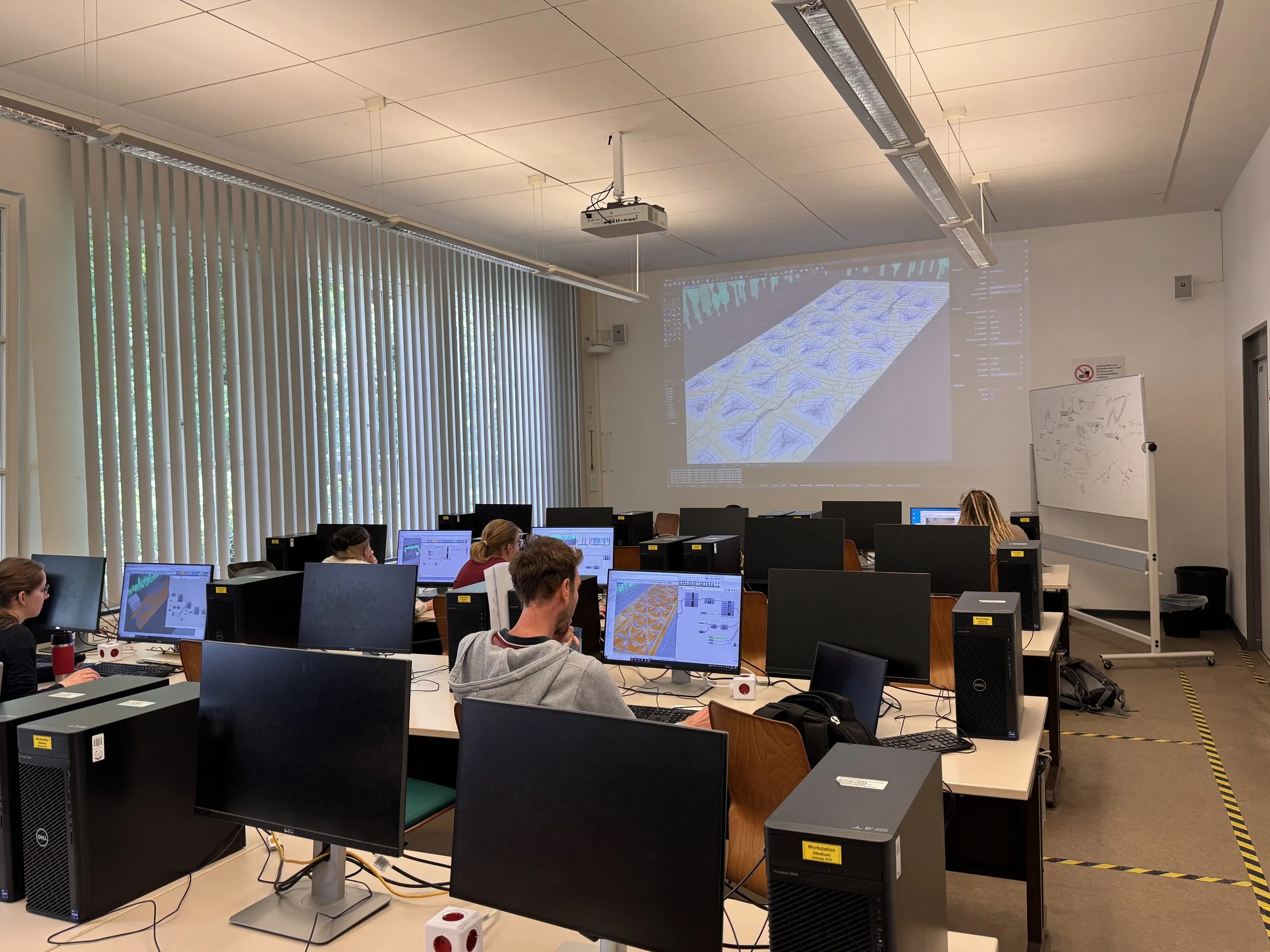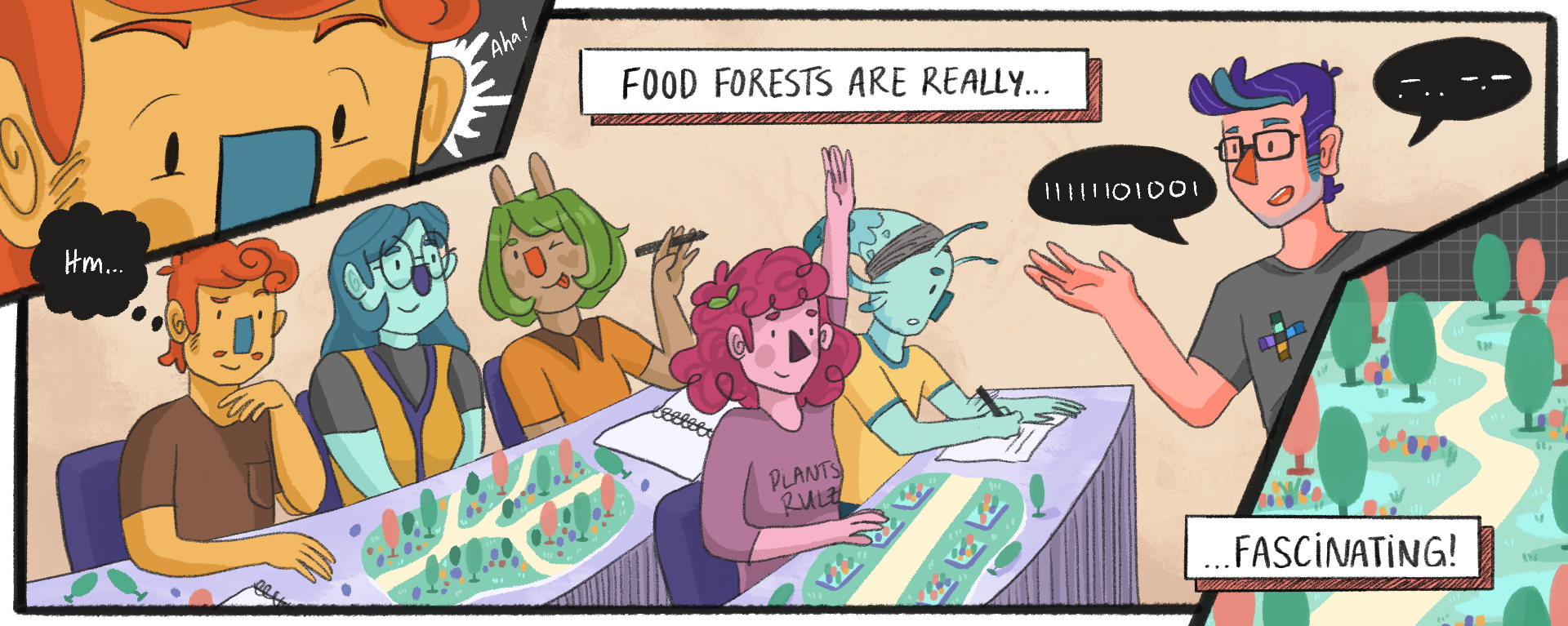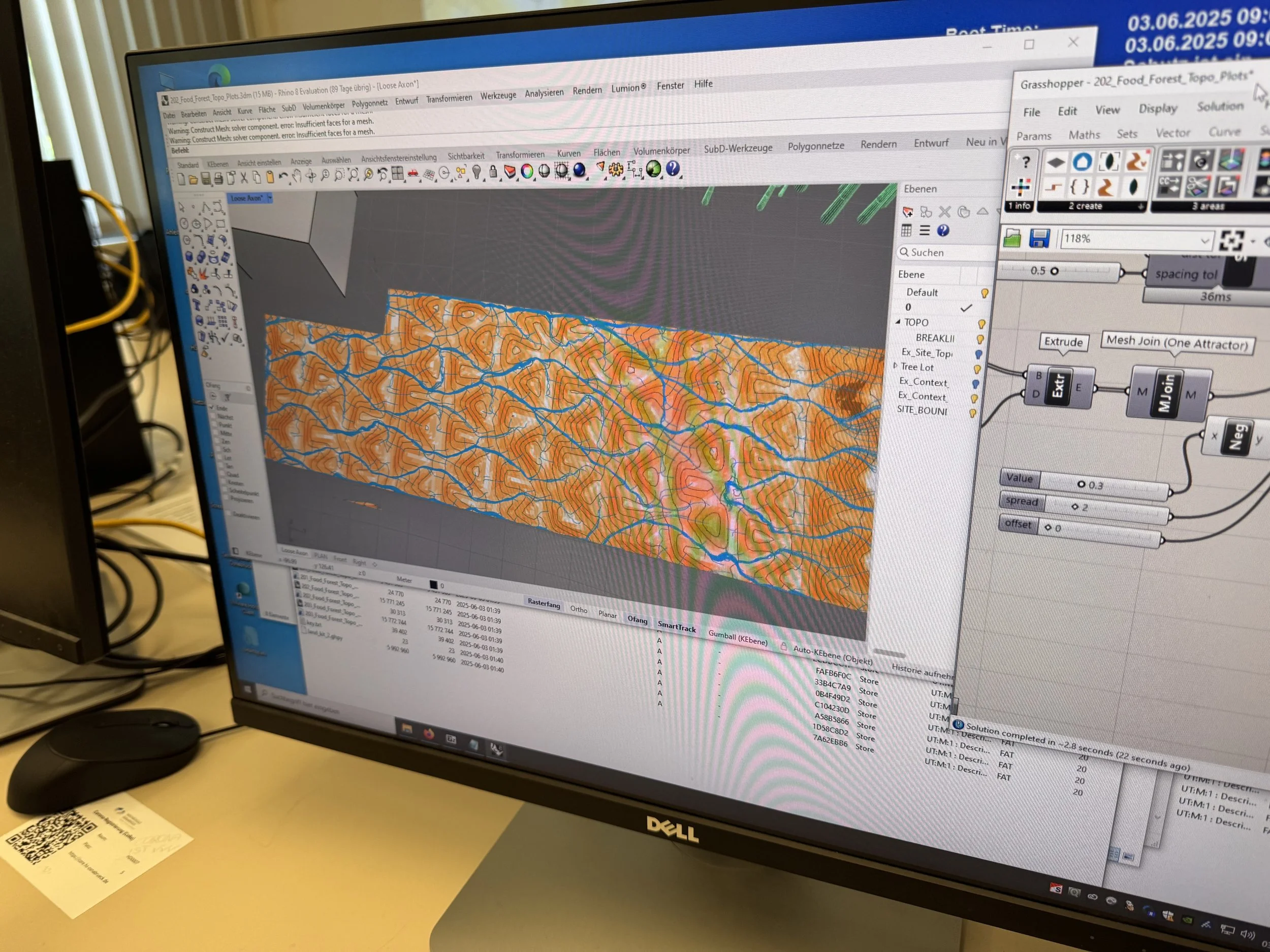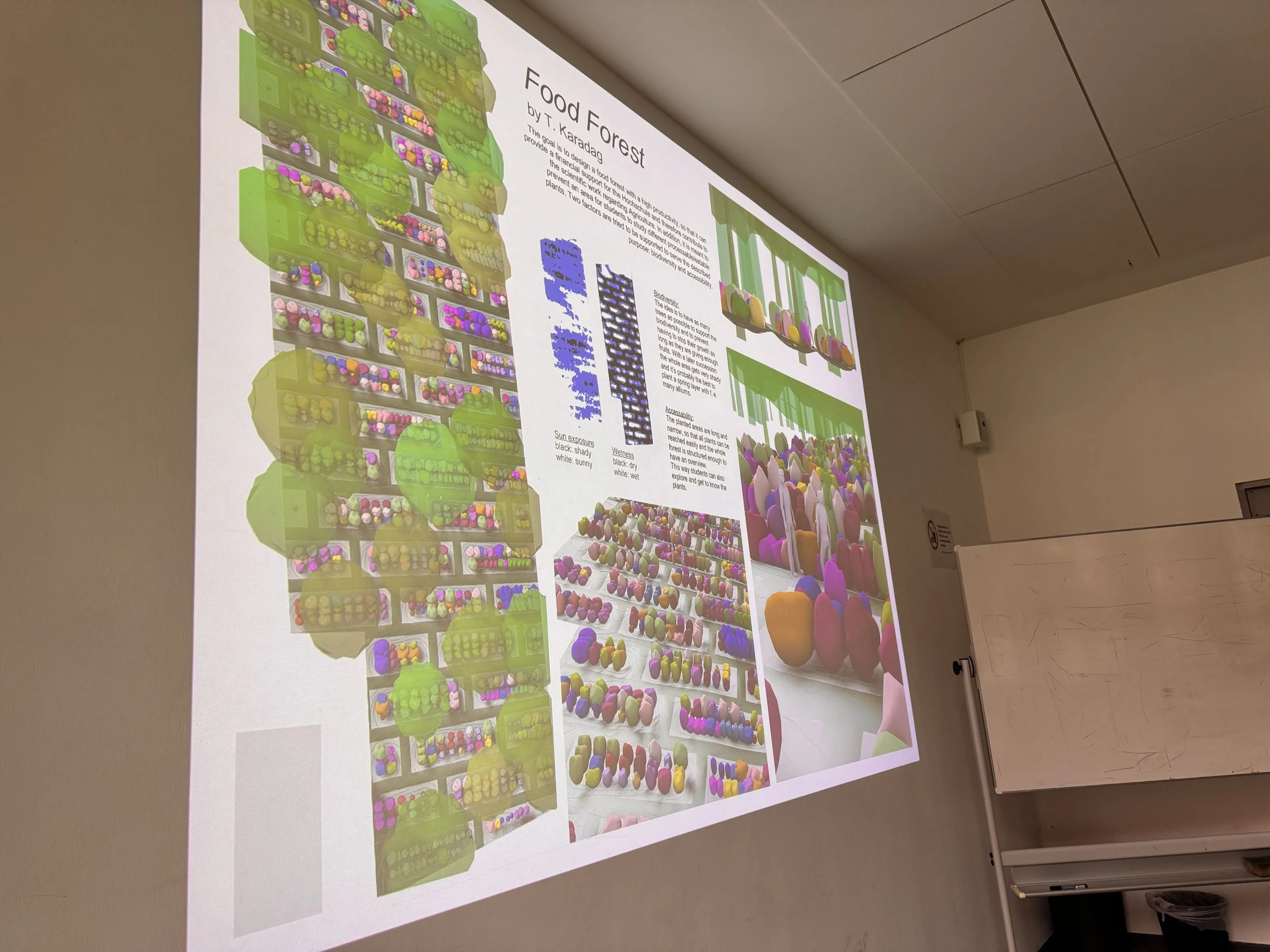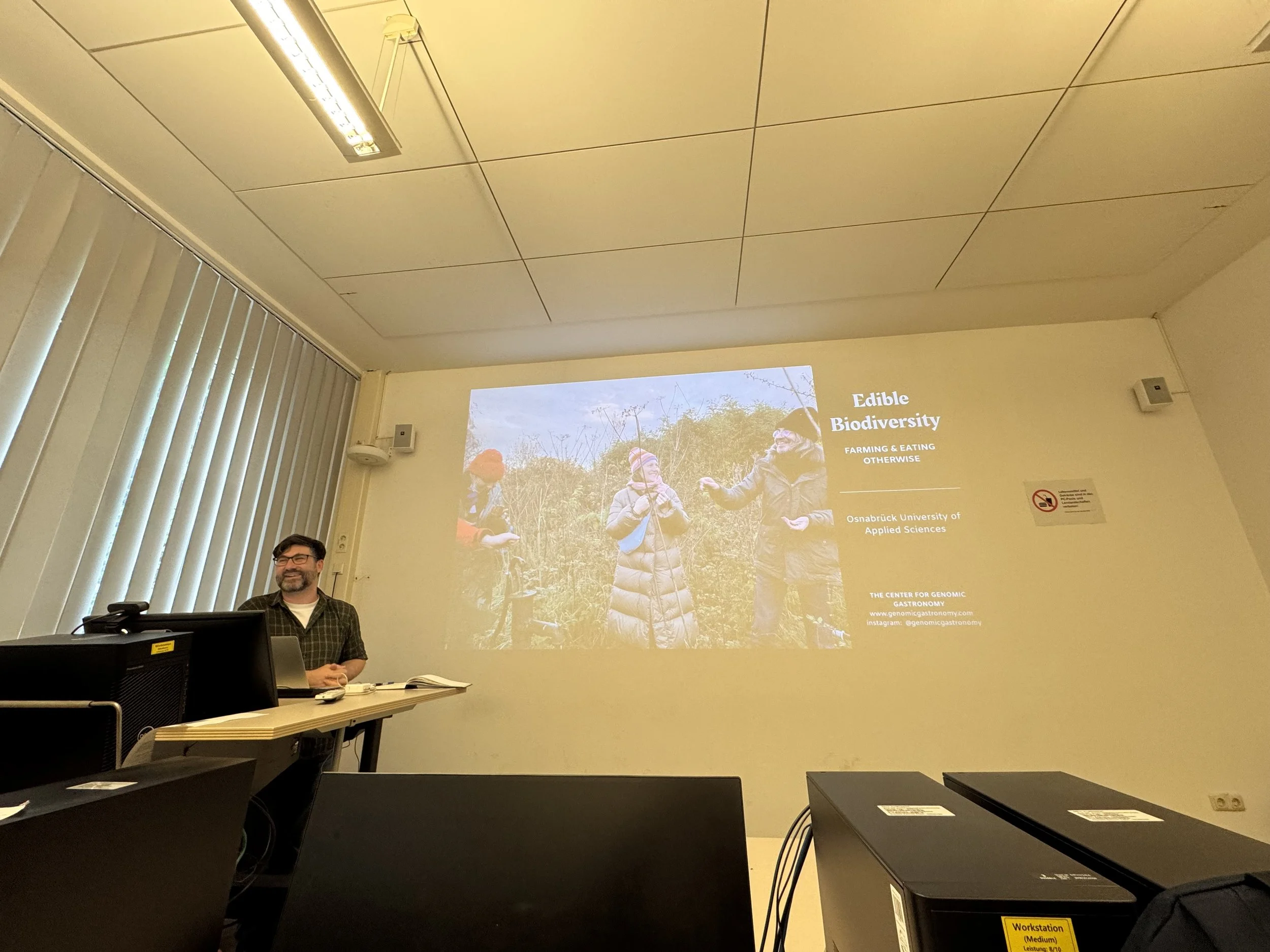Food Forest Workshop, Osnabrück, Part 3
Part 3: The Workshop
Osnabrück’s Hochschule campus is very different from the wildness of Ketelbroek. On my first walk around the campus, I noticed the small plaques indicating different species of trees and shrubs. This detail is important. The students who are trying to learn their plant species need all the help they can get. But as I walked around later that day I also started to notice that some of the species had edible characteristics… which made me realize that Food Forests are often more present than we are aware.
Osnabrück Hochschule
Later, my host, Ole Oßenbrink, pointed out that students were preparing for their plant identification test. In the main hall of the building where I was teaching, each window displayed plant cuttings for study—a little biodiversity brought indoors.
We had a relatively small group but this allowed us to dive deep and explore big ideas. The participants came from across the Hochschule’s degree programs, including a postdoc and Sebastian Deck, who joined several sessions.
Modeling topography and guiding water on Day 2.
Our week was structured like this:
Day 1 Seeds - We began by collecting all of the (metaphorical) seeds we needed to have a meaningful exploration.
1. We talked about Food Forests
2. We visted the studio site (an area on campus set aside for test crops)
3. I introduced Rhino basics and even some Grasshopper basics.
It was ambitious for the first day, especially since most students did not know Rhino or Grasshopper, let alone Land Kit. Some had never used CAD.
I was pleased with what I was able to introduce regarding food forests. My homework and a little mentorship from Samantha Graves-Brownell leading up to the workshop was super valuable. It also helped to look at it through the lens of computational design which helped me focus on what was achievable.
A crazy thing happened, though. While I was in mid-presentation, I was doing something that was possibly unique. I realized that I was being very careful to help the students think about the spectrum of possibilities of food forests. It was not prescriptive. The assignment I gave them asked them to frame their project in a realistic scenario which could have been in a town, a farm, a residence, a city, etc. And I was open to a wide range of goals for these hypothetical forests. They could be part of a park or agricultural operation. They could encompass any combination of research, education, outreach, production, or community participation. Food forests are polycultures, which means they inherently generate all kinds of benefit and activity. And that has the potential to vary widely depending on the needs and context of the community that is co-exiting with it.
We were gathering what we needed for a renaissance in regenerative agricultural.
It was a lot like this. Illustration by Gina Rattanakone.
Day 2 Soil - On Tuesday we began to look at how the soil and topography can be shaped and designed with simple tools to create the conditions we desire. And while we did that, we were also manipulating the flow and management of stormwater (and nutrient flows). The students, many of whom had never touch any kind of CAD, were pushing and pulling topography and adjusting water flows. It was exciting to see.
A possible way to think about land and water
We continued to discuss the additional benefit that you can get, beyond additional species, from the ways that you arrange your plan, topography, and water systems. We also watched a video from the Sepp Holzer Farm that blew all our minds.
Day 3 Plants - Here, we really got to heart of the matter; plants. We discussed how to design for biodiversity and the importance of conditions-driven placement of plants. We used Sun Exposure and Soil Moisture as our two primary conditional layers. Our main example broke the site into cells or plots, patterned in different ways, that could each act as experimental mixes, providing a plethora of experiments for a research campus such as this.
The challenge of how plants layer and create shade in addition to nutrient needs were big factors. The example scripts looked at how the tree layer would affect the conditions below, particularly shade.
One student was particularly interested in my example script that dynamically built differently typological zones based on slope and moisture analysis. The example showed how a winding swale might be used as a means to slow water flow and infiltration into the water table (also slowing nutrients from washing down the drain).
Day 4 Succession - In addition to its other complexities, we needed to understand how changing conditions, like the growth of trees and shade, soil changes, and longer time scales, could affect the suitability for plants over time. It’s simple really, as a forest (or mid-succession woodland) grows, shade and soil fertility increases. So I showed the students how we can reevaluate an area of planting using the “Update Conditions” tool we are introducing to Land Kit in 2.1. This tool reveals where new plants will need to reside as conditions change, providing the means to substitute them dynamically in this computational environment.
Another bonus in Wednesday was a visit and lecture to the class from Zack Denfeld, a longtime friend of mine who is part of The Center for Genomic Gastronomy. The work he shared was a wonderful counterpoint to what I could bring to the workshop. Much of the Center’s recent work is focussed on food forests and public engagement around food, politics, environment, and so much more. Zack has always brought so much fun and a prioritization of human experience that I don’t think about as often while I’m building my crazy systems.
Zack Denfeld, visiting from Amsterdam, presents on Edible Biodiversity
Day 5 Harvest - Another metaphorical reference (no actual produce was harvested in the making of this workshop), this day was all about finishing up our week of work and sharing it in a digital pinup. The students amazed me, producing incredibly thoughtful concepts, computational designs, and board layouts created right in Rhino using its layout features. Some of them leaned more of the grid or pattern which resembled a more complex version of agricultural paradigms. And the one student’s idea looked more like a series of typologies that swirled around a topographic swale, filling different plant niches and typologies according to sun, slope and soil moisture.
The workshop raised some interesting questions in addition to revealing so many new things I did not know about food forests. jJust like landscape architecture and software development, food forests are one of those life-long-learning situations. But this was a nutty and fruitful first dive into how I personally view food forests and the multitude of the ways they can be implemented and adopted into the fabric of our environment and our lives.
In addition to the workshop, visiting Ketelbroek, Osnabrück, and a visit from an old friend (Zack), I also had time to spend time with my host (and boss), Ole and his family which was so lovely and I look forward to the next opportunity to visit them in Osnabrück.

